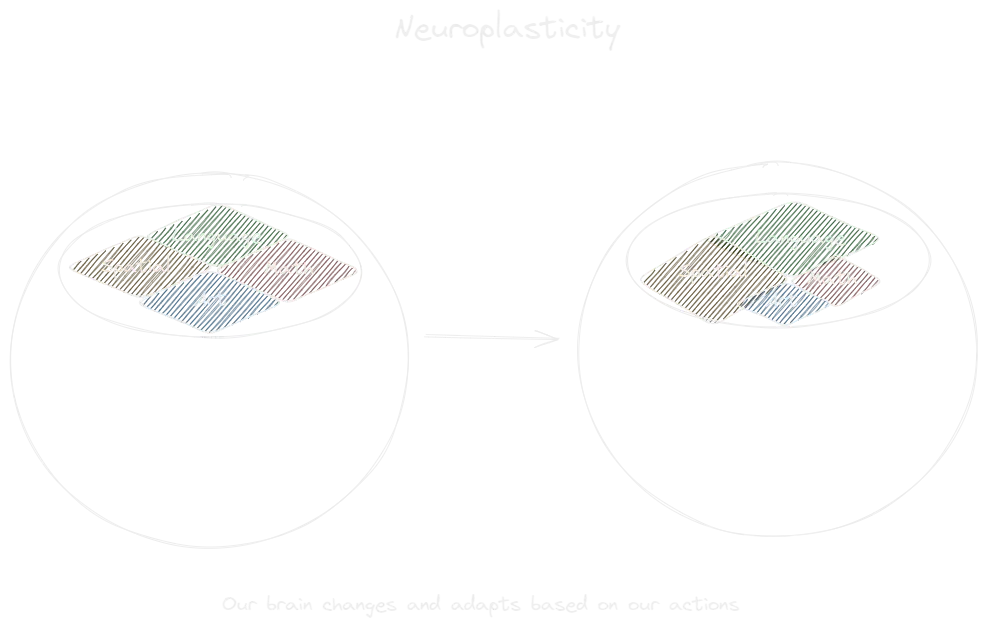Neuroplasticity
Notes
Neuroplasticity is the brain's ability to adapt. It learns based on our thoughts and experiences which sections are most used, and strengthens the connections there accordingly caching. For example, taxi drivers have a developed sense of spatial awareness, to have "maps" embedded in their brain, and to constantly know where they are.
Similarly, this means that when we study we actually change the structure of our brain, and that we can become better at something by practicing it Practice beats talent.
The most important take from neuroplasticity is that we are not fixed, we can grow, learn and adapt. We can change not only our "software", but also our hardware (to an extent) life adaptability. This doesn't mean that it will be easy, it is only when faced with repeat challenges of the same sort that the brains "decide" to develop that area learning should be hard. After all, the brain is lazy and focuses on effective resource management, not prosperity Pareto Principle.
That's also why it reverts back if left unused. One month of constant training is not enough to last a lifetime. It takes consistency to maintain the advantage over time.
Visual

Overview
🔼Topic:: Human Brain 🔼Topic:: Learning (MOC) ↩️Origin:: 🔗Link::